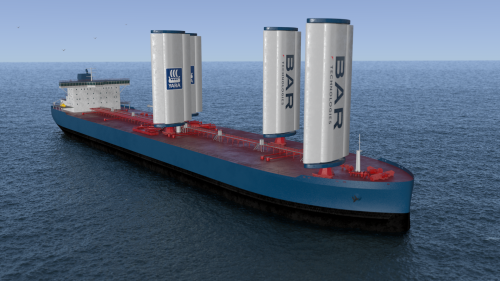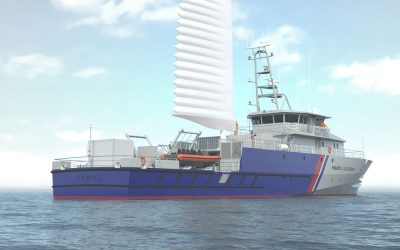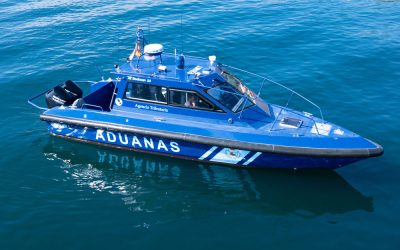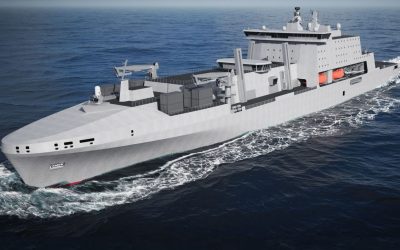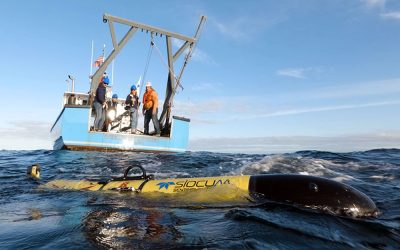Wind assisted propulsion (WAP) solutions are becoming increasingly prevalent in the bulk carrier sector, with the likes of Mitsui OSK Lines (MOL) developing a large, 60m high rigid wing sail on a coal carrier scheduled for delivery in 2022 (See TNA May, p22). Offering anywhere up to around 30% reduction in fuel consumption, and consequent CO2 emissions reductions, wind-powered projects that will potentially see installations on entire fleets of bulk carriers are in the works as shipping approaches IMO’s 2030 carbon reduction target.
“All forward-thinking vessel owners are now thinking of wind propulsion. It is, however, currently better suited for retrofitting to some of the global fleet more than other vessels,” John Cooper, CEO of BAR Technologies, tells The Naval Architect. In April 2021, the company announced it was joining forces with Yara Marine for an exclusive partnership that will see the first commercial retrofit of WindWings technology on a Cargill vessel, expected for delivery in 2022.
This will be a step forward for WindWings – a wind propulsion device of solid wing sails measuring up to 45m high which are installed on the deck of a vessel to harness wind – the design particulars for which have been kept closely under wraps by BAR Technologies (See TNA June 2020, p26).
Henceforth known as BARTech WindWings by Yara Marine Technologies (WindWings), more space and room to manoeuvre on deck ensures that conversions for the solution onboard bulk carriers are easier and possible without taking the ship out of service. There are, however, challenges.
One of the biggest bulk carriers face in adopting the solution is ensuring WindWings do not affect port operations, but Cooper remains confident: “It is likely that ports will become more accommodating for ships with WAPs. Although not essential for the success of WindWings, we can see ports being flexible, for example by allowing vessels to always dock on one side rather than the other (to avoid the side where WAPs are installed).”
A key part of WindWings’ design is its automated folding process and, for safety purposes, its ability to depower or fold in too strong wind conditions so as to not exceed the technology’s predetermined leeway, heel angles and rudder angle maximums. Similarly, Anemoi Marine Technologies (Anemoi), a company specialising in rotor sails, tackles manoeuvrability in port via its patented rail and folding deployment systems, which allow rotor sails to move transversely/longitudinally depending on deck layout and lower to a horizontal position.
In April 2021, Anemoi announced that Oldendorff Carriers had joined one of its joint development projects (JDP) for dry bulk carrier rotor sail solutions; wind propulsion technology that uses the Magnus effect for propulsion whereby wind passing over the spinning rotor sail creates a pressure difference and a lift force perpendicular to the wind direction.
Originally launched in November 2020 with project partners Lloyd’s Register and Shanghai Merchant Ship Design and Research Institute, the JDP covers six different ship types in the tank and bulker segments, but the first to be addressed and in its final design stages is for a Newcastlemax owned by Oldendorff.
Bulk carriers are the focal point for the JDP partly due to their size, Anemoi Marine Technologies COO, Nick Contopoulos, explains: “One of the benefits of rotor sails is that they are suitable for most ship types and sizes. The main consideration relating to size is available deck space, which tends to make larger vessels slightly more favourable. Larger ships also tend to be on longer time charters with more predictable routes.”
Rotor sails are proving to be a popular wind-powered choice for the bulk carrier sector, with Norsepower, in collaboration with Brazillian mining company Vale, announcing in May the first installation its rotor sails onboard a bulk carrier – the 325,000dwt Sea Zhoushan.
Reflecting on the changing opinion of companies investing in WAPs, Yara Marine Technologies CSO Aleksander Askeland concludes: “A lot has changed just the last year. We now see much more action-oriented politicians and regulatory bodies. The winds of change are blowing. You can either try to fight it or you can set sail. It is survival of the fittest. Every major shipowner now works strategically at top level, on how to adapt. With 30% efficiency increase and emissions benefits we (WindWings) stand out as a very viable way forward for many shipowners.”
